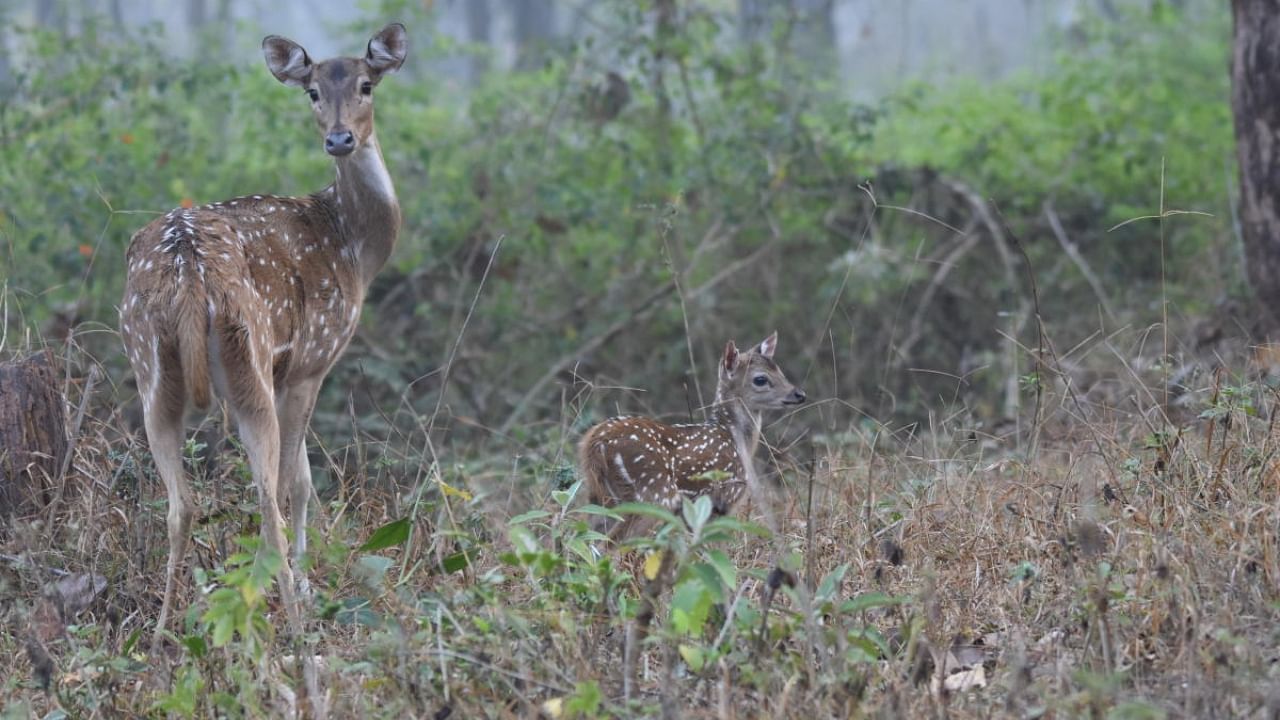
The Kali Tiger Reserve (KTR) in Uttara Kannada district is receiving nearly 80 sambar deer and chital from the Mysuru zoo.
While four such sambar deer have already been translocated to the reserve’s core area, the remaining are expected to be released by December.
While the Mysuru zoo has ‘donated’ sambar deer and chital to various other zoos, this is the second time that herbivores have been translocated to a reserve.
These herbivores are being released as part of the zoo’s surplus animal collection plan and also to enrich the prey base at KTR.
As per the Central Zoo Authority norms, each zoo can house a certain amount of animals.
When the species breed more than the housing capacity of zoos, such animals are called surplus animals.
To manage such excess animals, the zoos, after proper planning, can either release them into their natural habitat or exchange them with other zoos.
In this case, the Mysuru zoo, one of the oldest and largest in Karnataka, has decided to release them at KTR.
As per the recent tiger census conducted in 2022, there are more than 25 tigers and 200 plus leopards in KTR.
While officials claim that there is no dearth of prey for these predators at the reserve, there has been an increase in cattle lift by the tigers and leopards.
KTR field director Maria Christu Raj told DH: “The translocation of these herbivores will help in reducing human-animal conflict as the predators will get their prey within the protected area,” he said.
Adequate fodder
These animals will be released in ranges where there is less prey base for predators and adequate fodder for herbivores, he added.
Ajit Kulkarni, executive director of Chamarajendra Zoological Gardens in Mysuru, said nearly 40 sambar deer and 40 chitals (spotted deer) would be translocated to KTR soon.
“These two herbivores are prolific breeders and their population has increased beyond the storage capacity at Mysuru zoo. Three years ago, nearly 80 herbivores were successfully released into Arabithittu wildlife sanctuary in Mysuru,” he said.
Soft release
Kulkarni said these herbivores, which will travel nearly 550 km from Mysuru to KTR, will be soft released, meaning they will be monitored at an enclosure for over 45 days and later released into the wild so that they acclimatise to the environment easily.
These herbivores will be released in the core area of the forest so that they do not cause harm to crops in human habitation.
Gene pooling
Sources said that the release of these herbivores could also help in gene pooling and management of grasslands.